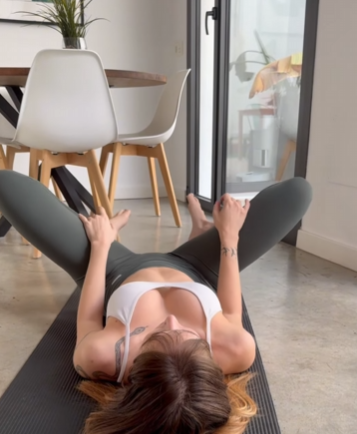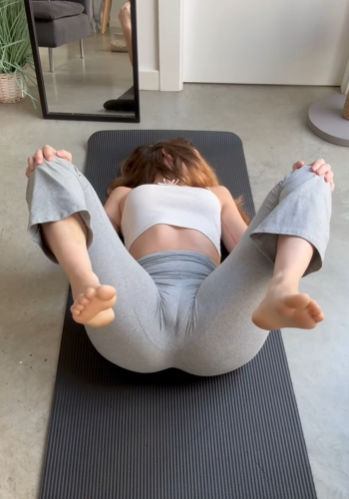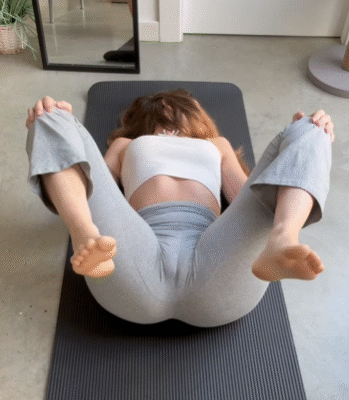
In today’s fast-paced world, many people spend long hours sitting at desks, hunched over computers, or glued to their smartphones. This sedentary lifestyle often leads to stiffness, discomfort, and pain in the back. A regular back stretching routine is essential not only to relieve tension but also to prevent long-term issues like poor posture, chronic back pain, and reduced mobility. Whether you are an office worker, an athlete, or someone who simply wants to maintain a healthy spine, incorporating back stretching exercises into your daily routine can significantly improve your quality of life.
Why Back Stretching Matters
The spine is a complex structure made of vertebrae, discs, muscles, ligaments, and nerves, all working together to support the body and facilitate movement. Over time, poor posture, repetitive movements, or lack of activity can lead to muscle imbalances and stiffness in the back. Stretching helps to lengthen and loosen tight muscles, improve blood circulation, enhance flexibility, and maintain proper alignment. Additionally, back stretching can reduce stress by relaxing the nervous system, which often gets tense when the body is held in a static position for long periods.
Preparing for a Back Stretching Routine
Before starting any stretching exercises, it’s important to prepare your body. Begin with a warm-up to increase blood flow and loosen muscles. Simple movements like marching in place, gentle torso twists, or shoulder rolls for five to ten minutes can help prevent injury. Wear comfortable clothing that allows free movement, and use a yoga mat or soft surface to provide cushioning for your back during floor exercises.

Simple Back Stretching Exercises
Here are some effective exercises that target different areas of the back. Performing these stretches consistently can help reduce tension, increase flexibility, and improve posture.
1. Cat-Cow Stretch
The Cat-Cow stretch is a classic yoga movement that mobilizes the spine and stretches both the upper and lower back.
How to perform:
- Begin on your hands and knees in a tabletop position. Ensure your wrists are under your shoulders and knees under your hips.
- Inhale deeply as you arch your back, lifting your head and tailbone toward the ceiling (Cow Pose).
- Exhale as you round your spine, tucking your chin toward your chest and your tailbone under (Cat Pose).
- Repeat this flow for 10–15 breaths, moving slowly and focusing on spinal articulation.
2. Child’s Pose
Child’s Pose is a gentle stretch that targets the lower back, hips, and spine, providing relief from tension and fatigue.
How to perform:
- Kneel on the floor with your knees wide apart and toes touching.
- Sit back on your heels and extend your arms forward, lowering your torso toward the ground.
- Rest your forehead on the mat and breathe deeply.
- Hold for 30–60 seconds, allowing your back muscles to release tension naturally.
3. Seated Spinal Twist
Twisting stretches improve spinal mobility and relieve tension in the middle and upper back.
How to perform:
- Sit on the floor with your legs extended in front of you.
- Bend your right knee and place your foot on the outside of your left thigh.
- Place your right hand behind you for support and your left elbow outside your right knee.
- Inhale to lengthen your spine, then exhale and gently twist to the right.
- Hold for 20–30 seconds, then switch sides.
4. Knee-to-Chest Stretch
This stretch is particularly effective for the lower back and can help relieve tension after prolonged sitting.
How to perform:
- Lie on your back with your legs extended.
- Bring one knee toward your chest, holding it with both hands.
- Keep your other leg extended or bend it slightly if needed for comfort.
- Hold for 20–30 seconds, then switch legs. For a deeper stretch, bring both knees to your chest simultaneously.

5. Cobra Stretch
The Cobra stretch strengthens and opens the lower back while stretching the chest and shoulders.
How to perform:
- Lie face down with your legs extended and hands placed under your shoulders.
- Press through your hands to lift your chest off the ground, keeping your elbows slightly bent.
- Keep your shoulders relaxed away from your ears and gaze forward or slightly upward.
- Hold for 15–30 seconds, then gently lower your torso. Repeat 2–3 times.
6. Standing Forward Bend
Forward bends relieve tension in the entire back, particularly the hamstrings, which are connected to lower back health.
How to perform:
- Stand with your feet hip-width apart.
- Hinge at your hips and fold forward, letting your arms hang toward the floor.
- Slightly bend your knees if your hamstrings are tight.
- Hold for 20–30 seconds while breathing deeply, feeling the stretch along your spine.
Tips for Effective Back Stretching
- Consistency is key: Stretching once in a while is less effective than maintaining a daily routine. Even 10–15 minutes each day can make a difference.
- Avoid bouncing: Gentle, static stretches are safer and more effective than fast, jerky movements.
- Listen to your body: Stretching should create a gentle pull, not pain. Overstretching can cause injury.
- Combine with strengthening exercises: Strengthening core muscles along with stretching improves spinal support and reduces the risk of back pain.
- Practice mindful breathing: Deep, slow breathing enhances relaxation and oxygenates muscles, helping them release tension more effectively.

Incorporating Back Stretching Into Daily Life
Back stretching doesn’t need to be confined to a formal exercise session. Small adjustments throughout the day can make a big difference. Try these ideas:
- Stretch for a few minutes every hour if you work at a desk.
- Use breaks to perform simple movements like shoulder rolls, side bends, or standing back extensions.
- Perform a gentle stretch routine before bed to relax your muscles and improve sleep quality.
- Engage in activities like yoga, Pilates, or swimming, which naturally promote spinal flexibility.
Conclusion
Back stretching exercises are essential for maintaining a healthy, flexible, and pain-free spine. By incorporating simple stretches like the Cat-Cow, Child’s Pose, Spinal Twist, Knee-to-Chest, Cobra, and Forward Bend into your daily routine, you can alleviate tension, enhance mobility, and improve overall well-being. Remember, the key is consistency, mindful breathing, and gentle movements. Over time, a few minutes of dedicated back stretching each day can transform your posture, reduce discomfort, and promote a stronger, more resilient back.
Whether you are managing minor stiffness from sitting too long or actively trying to prevent chronic back problems, a back stretching routine is a simple yet powerful investment in your long-term health. Take the time to stretch, listen to your body, and enjoy the benefits of a flexible, energized, and pain-free back.



